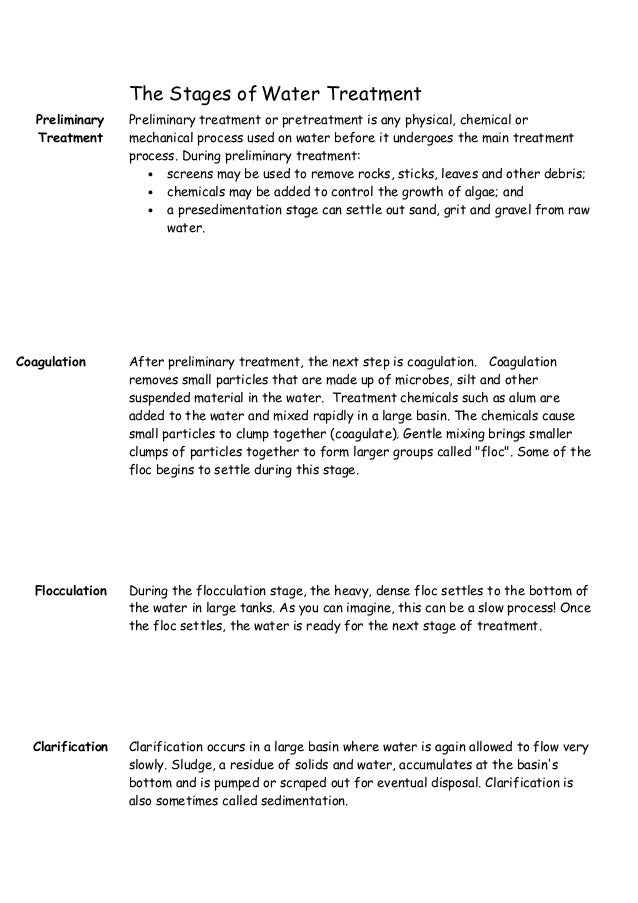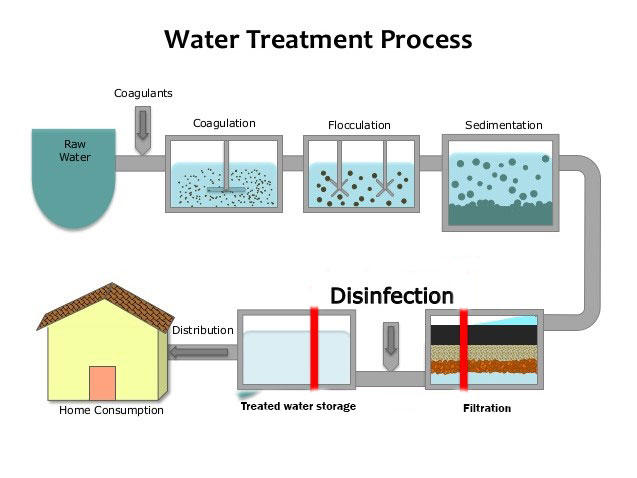The 2-Minute Rule for In Home Water Treatment Systems
Table of Contents8 Easy Facts About In Home Water Treatment Systems ShownAn Unbiased View of In Home Water Treatment SystemsGetting My In Home Water Treatment Systems To WorkExcitement About In Home Water Treatment SystemsEverything about In Home Water Treatment SystemsAbout In Home Water Treatment SystemsAll about In Home Water Treatment SystemsThe Single Strategy To Use For In Home Water Treatment Systems
You will certainly also learn regarding the management of wastes produced in the procedure of water therapy, and also think about the issues of sustainability and strength in relation to massive water treatment. Understanding Outcomes for Research Study Session 5When you have actually researched this session, you should have the ability to:5. 1 Specify and also use properly every one of the key words published in vibrant.1)5 - in home water treatment systems. 2 Explain the various phases in the water treatment process. (SAQs 5. 1 as well as 5. 2) 5. 3 Describe just how the wastes from water therapy plants are gotten rid of. (SAQ 5. 3)5. 4 Suggest just how water treatment modern technologies can be made sustainable as well as resilient. (SAQ 5. 4)5. 5 Undertake basic calculations in regard to supply of water.
In Home Water Treatment Systems for Beginners
5)5. 1 The need for large-scale water therapy, Water treatment is the procedure of removing all those materials, whether biological, chemical or physical, that are potentially unsafe in water supply for human and domestic use. This treatment aids to create water that is secure, tasty, clear, colourless and also odourless. Water likewise requires to be non-corrosive, meaning it will not trigger damage to pipework.
This develops a demand for big volumes of safe water to be supplied dependably as well as consistently, as well as this demand is growing. As urban populations enhance, there is a demand to find brand-new sources to meet the growing need. If groundwater is available this can usually be made use of with very little therapy however any kind of surface area water source will certainly require to be dealt with to make it safe.
Get This Report on In Home Water Treatment Systems
6 discusses exactly how this computation is made but initially you will certainly look at the primary stages in the water therapy process. 2) in large-scale water treatment for city community water supply (Abayneh, 2004).
(There is a chlorination step at the end of the treatment procedure, which is regular in the majority of water treatment plants). 3 Coagulation as well as flocculation, After oygenation, coagulation takes place, to remove the fine fragments (much less than 1 m in size) that are put on hold in the water.
The Basic Principles Of In Home Water Treatment Systems
Here the water is gently stirred by paddles in a flocculation basin (Number 5. 5) and also the flocs enter call with each various other to create larger flocs. The flocculation container often has a variety of areas with decreasing mixing speeds as the water advances via the basin (Figure 5.

Fascination About In Home Water Treatment Systems
7), with a circulation check out this site price of 48 cubic metres per square metre of filter surface per hour (this is written as 48 m3 m2 h1) are usually used. When the filters are full of caught solids, they are backwashed. In this procedure, clean water and air are pumped in reverse up the filter to remove the entraped pollutants, as well as the water bring the dirt (described as backwash) is pumped into the sewerage system, if there is one.
5.2. 6 Chlorination, After sedimentation, the water is decontaminated to eliminate any kind of remaining pathogenic micro-organisms. The most typically made use of anti-bacterial (the chemical utilized for sanitation) is chlorine, in the kind of a fluid (such as sodium hypochlorite, Na, OCl) or a gas. It is reasonably inexpensive, as well as easy to use.
The Of In Home Water Treatment Systems
The amount of chlorine left hereafter is called residual chlorine. This remains in the water completely with the circulation system, shielding it from any type of micro-organisms that might enter it, until the water reaches the customers - in home water treatment systems. Globe Health Company Standards (THAT, 2003) recommend an optimum residual chlorine of 5 mg l1 of water.
5 mg l1 of water after thirty minutes' call time (WHO, n. d.). There are other means of sanitizing water (e. g. by utilizing the gas ozone, or ultraviolet radiation) yet these do not protect it from microbial contamination after it has actually left the water treatment plant. Complying with disinfection the cured water is pumped right into the distribution system.
In Home Water Treatment Systems Fundamentals Explained
7 that site Auxiliary therapy, Auxiliary therapy might in some cases be required for the benefit of the populace (in home water treatment systems). One such circumstances is the fluoridation of water, where fluoride is included in water. It has been stated by the Globe Health Company that 'fluoridation of water supplies, where feasible, is one of the most reliable public health action for the prevention of oral degeneration' (THAT, 2001).
On the other hand, as you discovered in Research Session 2, in the Rift Valley of Ethiopia, the water resources contain a greater concentration of fluoride than is desirable. Tekle-Haimanot et al. (1995) discovered that the level of fluoride in alcohol consumption water from deep wells there ranged from 1. 5 to 36 mg l1.
Not known Incorrect Statements About In Home Water Treatment Systems
What does excess fluoride in the water lead to? The easiest means of doing this is to blend the high-fluoride water with water that has no (or really little) check this fluoride so that the last mix is secure.

Both chemicals are included to and quickly blended with the fluoride-contaminated water and after that the water is stirred carefully. Flocs of aluminium hydroxide form and these remove the fluoride by adsorption and ion exchange. The flocs are after that removed by sedimentation. 5.3 Monitoring of wastes from water therapy plants, From the water treatment process that you have actually simply examined, make a list of the different wastes that occur.